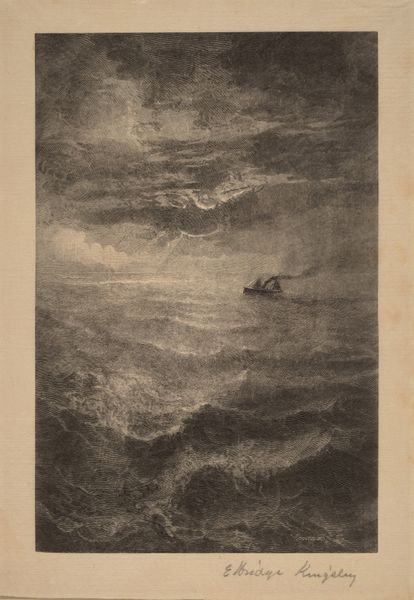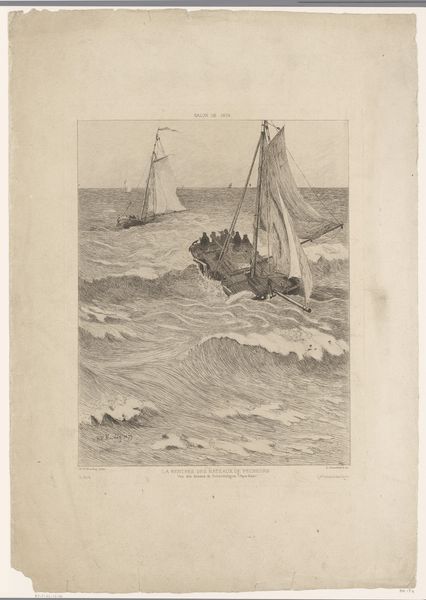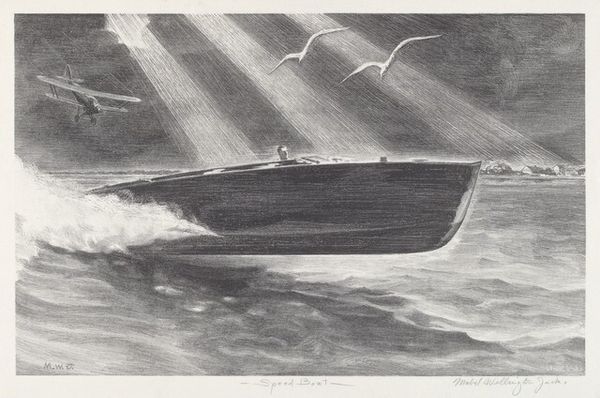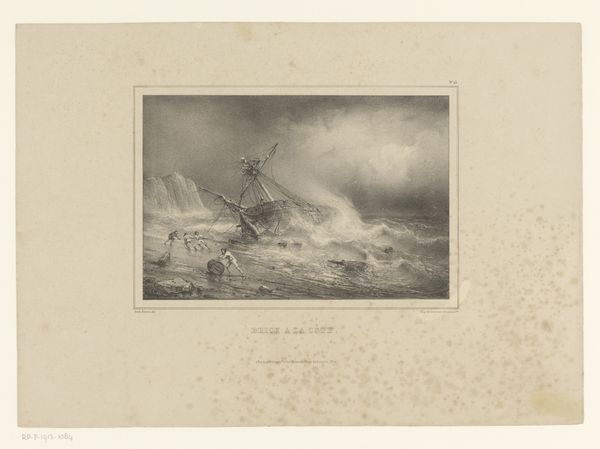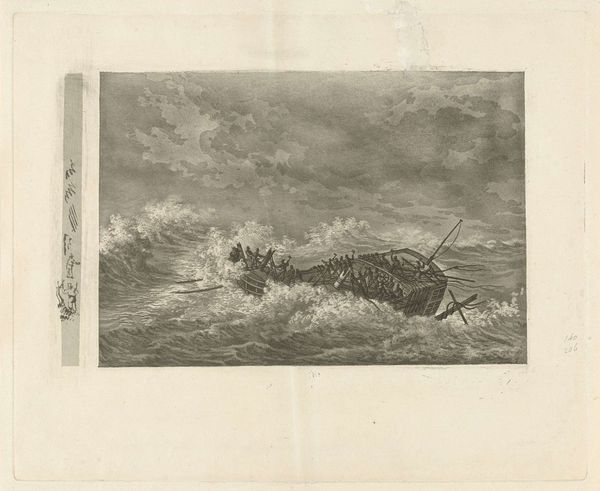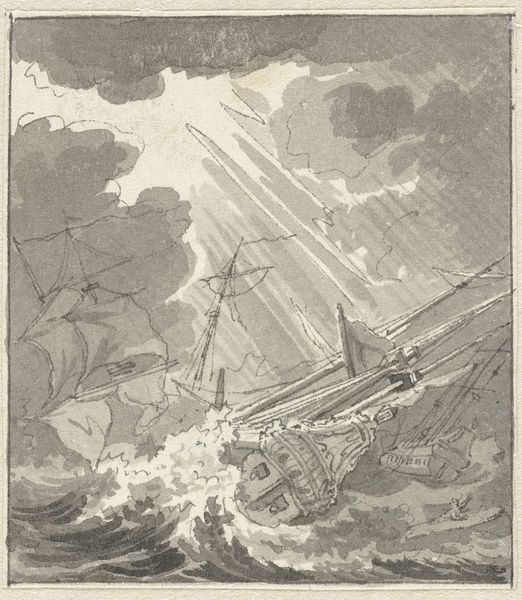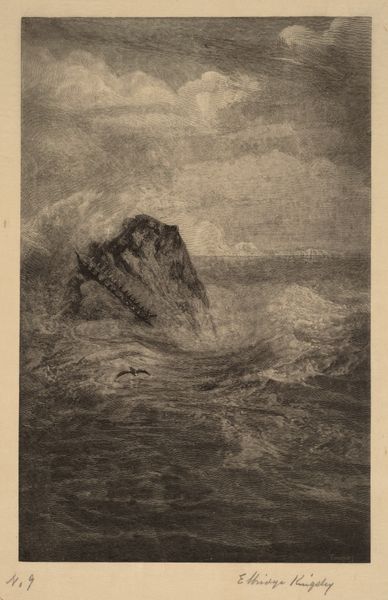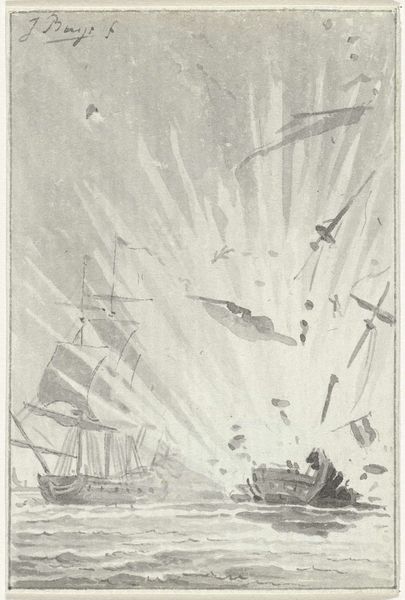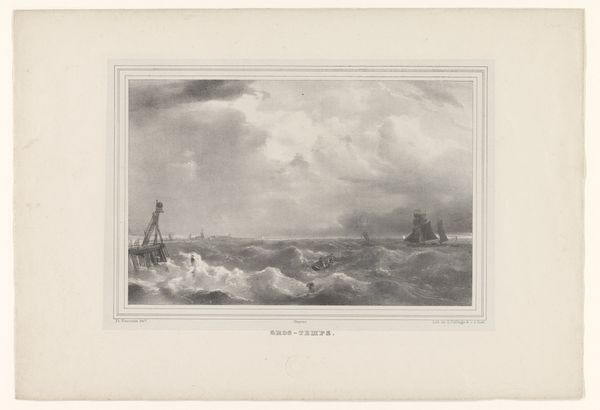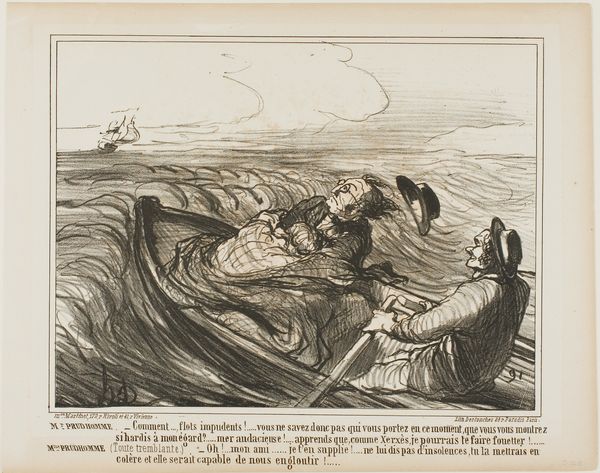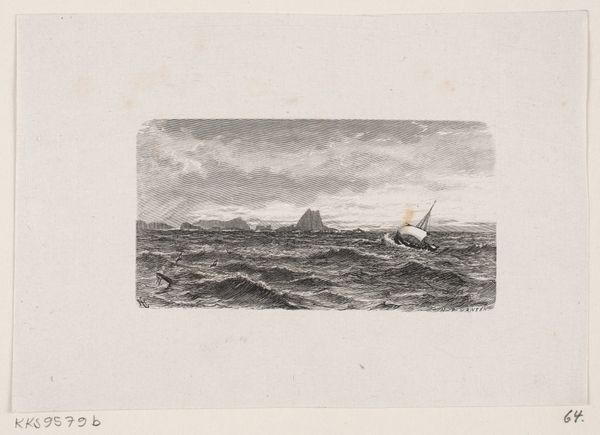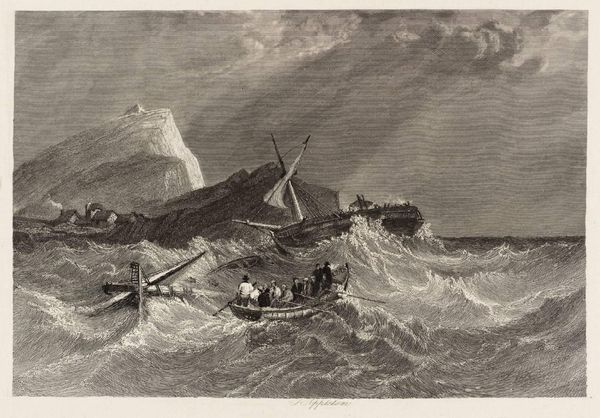
drawing, print
#
portrait
#
drawing
# print
#
caricature
#
landscape
#
figuration
#
line
#
symbolism
#
history-painting
Dimensions: height 215 mm, width 275 mm
Copyright: Rijks Museum: Open Domain
Curator: Here we have "Spotprent over het aftreden van Thorbecke, 1866," or "Cartoon about the resignation of Thorbecke, 1866." It's a print, a drawing, likely intended for wide circulation at the time of its creation. Editor: My first impression is somber. The grayscale rendering and depiction of a tumultuous sea evoke a strong sense of political drama and perhaps even defeat. It looks very bleak. Curator: Indeed. Notice the composition. On the left, we have what appears to be a disembodied head floating in the night sky, while to the right, another head emerges from the water bathed in an almost divine light. This duality, presented through line and form, presents a narrative. Editor: It does! That striking juxtaposition really underscores the turmoil surrounding Thorbecke's resignation. The floating head could represent public opinion or perhaps even fate, watching over the unfolding events. Curator: Precisely. And that emergence from the water, those almost radial lines creating a halo effect... This technique invites contemplation of ideas regarding redemption, or at the very least, a kind of reluctant farewell to leadership. Editor: Seeing it in this light prompts thoughts about the power dynamics at play, and also about what role that political cartoons have historically had as commentary. I mean, this cartoon's very existence suggests the power that images can wield. Curator: And observe how the artist utilizes symbolism. The stormy sea and the celestial bodies hint at larger forces shaping political destinies. Also the lack of vivid colors focuses on content not embellishments. Editor: Very astute! Placing this image within that historical and political context reminds us that visual representation can shape public perception. A print like this likely influenced discourse during a pivotal period. Curator: Agreed. It's a remarkable synthesis of technique and symbolic representation, really solidifying that legacy is always up for grabs after all leadership. Editor: It's powerful to recognize how those artistic choices worked to create the sense of political twilight back in 1866, and really allow for us to interpret that period still today.
Comments
No comments
Be the first to comment and join the conversation on the ultimate creative platform.
